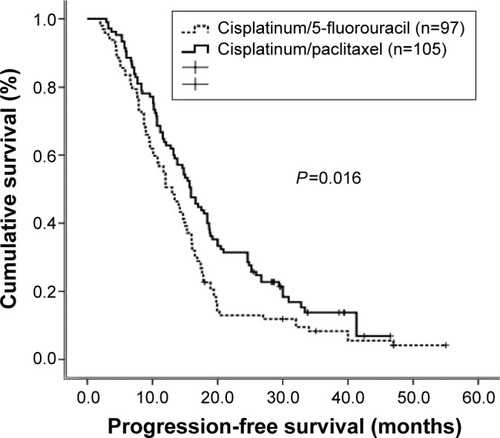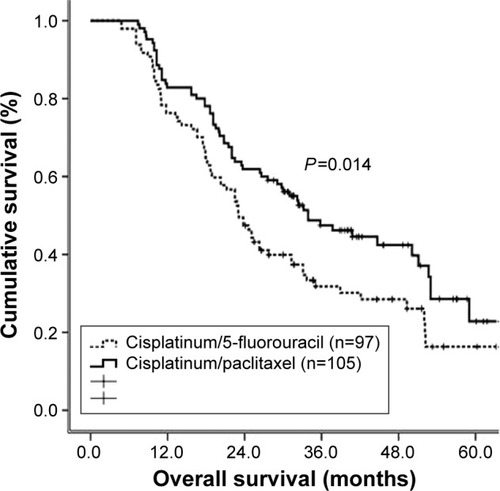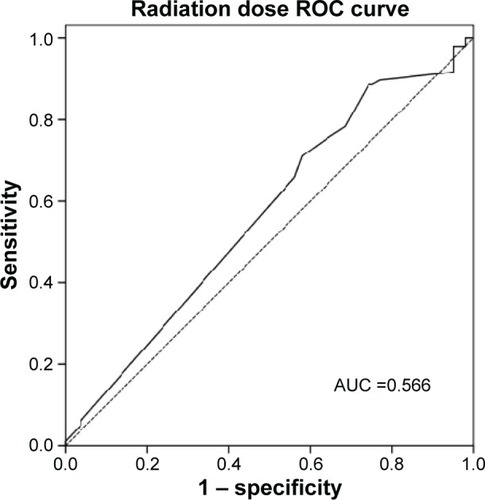Figures & data
Table 1 Patient and tumor characteristics
Table 2 Response among patients with locally advanced ESCC to first-line treatment
Table 3 Efficacy of first-line treatment
Table 4 Cox proportional hazard model for progression-free survival and overall survival
Figure 1 Kaplan–Meier estimates of progression-free survival according to different chemotherapy regimens.

Figure 2 Kaplan–Meier estimates of overall survival according to different chemotherapy regimens.

Figure 3 The ROC analysis of radiation dose.
Abbreviations: AUC, area under the curve; ROC, receiver operating curve.

Table 5 Major toxicities during dCRT
